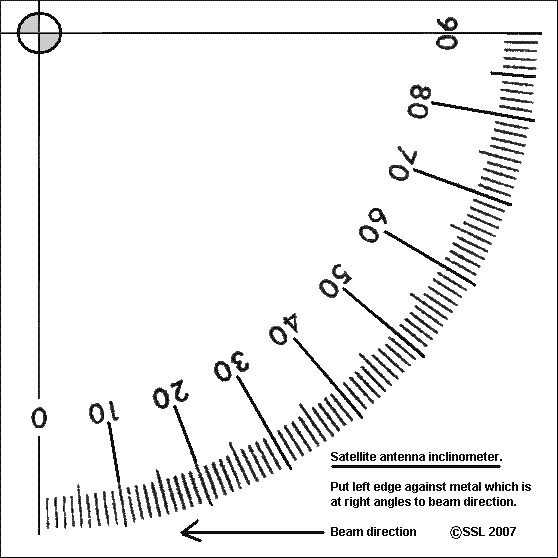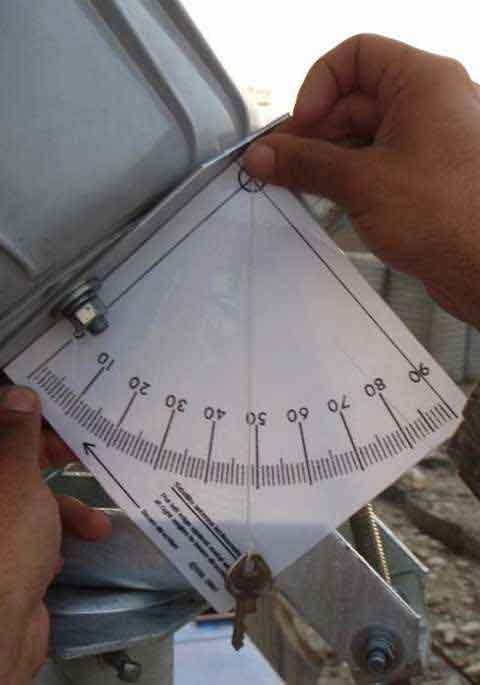|
Correcting VSAT dish distortion Explanation of latitude and longitude |
How to make an inclinometer
You can easily make you own inclinometer, for satellite dish elevation adjustment, which will more accurate than most cheap ones you can buy.
Instructions on how to make an inclinometer:
You need to print out the image below and stick it onto a piece of cardboard. Make a pinhole at the apex (centre of the small circle, near top left corner) and insert a length of strong sewing thread. Behind the card use sticky tape to secure the thread. At the front, attach a small weight, such as a 15mm or 1/2 inch metal nut, to the end of the thread, approx 20 cm or 8 inches long, so the weight dangles down past the lower edge of the card.

How to print the square image: Put your mouse on the image above, and do right mouse click, then select "Print picture". After you have printed, check by measuring each way that the image has printed as an exact square.
Your printer will inset a left white margin. Don't worry, if you put the paper into the printer feeder straight then the picture will still be accurately upright and parallel to the left side of the paper. When attaching to a card make sure the left edge of the paper goes exactly to the left edge of the card so the left margin gap is parallel down the left side.
How to use your inclinometer:
To use it, simply place the left edge of the card against the surface you are trying to measure. See installing a Prodelin VSAT satellite dish for a picture of the inclinometer in use. Always think about the angle and ask yourself if the meaning of the numbers make sense. Lowering the beam should reduce the elevation angle, down to zero at the horizon. Straight up is 90 deg. If the scale reads backwards in your case, don't worry; just count the degrees from the other end.
In the case of axi-symmetric, circular dishes, with 3 or 4 equal length struts supporting the LNB on the exact centre line, then the beam is at right angles to the central backing structure behind the reflector.
In the case of offset fed antennas, where there is a main feed support arm, normally at the bottom of the dish, and two shorter side support struts there is an offset angle. When the front face of the dish is upright the beam will have an elevation angle of perhaps 22.5 deg, 25 deg etc according to the specific manufacturer. To help in these cases, the manufacturer often makes a part of the metal structure so it is at right angles to the beam direction. This metal part may be the lower part of the spine behind the dish or form the rear part on a sloping boss fixture behind the middle of the dish. If there is scale you don't need this inclinometer !

|
Page started 15 Nov 2007 ECJ, amended 21 Oct 2025. |